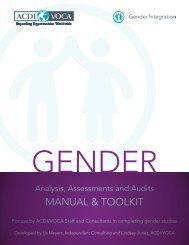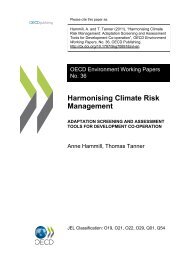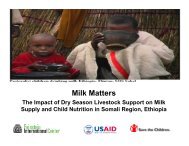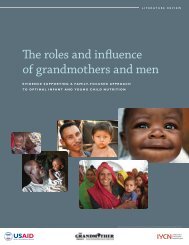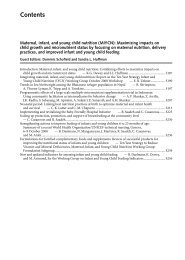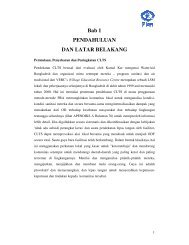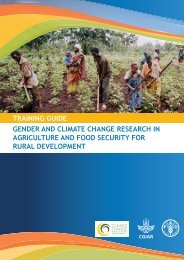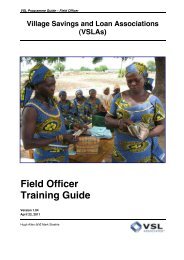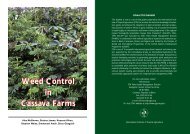WFP Gender Policy - WFP Remote Access Secure Services
WFP Gender Policy - WFP Remote Access Secure Services
WFP Gender Policy - WFP Remote Access Secure Services
- No tags were found...
Create successful ePaper yourself
Turn your PDF publications into a flip-book with our unique Google optimized e-Paper software.
18. The development of this <strong>WFP</strong> gender policy hasbeen informed by the evaluation of <strong>WFP</strong>’sgender policy (2003–2007), consultations withpartners and field staff, desk reviews of partners’policies, ECW baseline and follow-up surveys. 19A returnee with his children in a temporary resettlementcamp in Afghanistan.GoAls19. The goals are:• to strengthen and maintain an institutionalenvironment that supports and encouragesgender mainstreaming;• to improve the effectiveness andsustainability of <strong>WFP</strong> programmesaddressing hunger in partner countries; and• to promote the integration of a genderperspective into the food and nutritionpolicies, programmes and projects ofpartner countries and cooperating partners.ExPECtEd outComEs20. The expected outcomes are:• increased knowledge and skills among <strong>WFP</strong>staff for addressing gender in policydevelopment and programming;• improved and sustained gendermainstreaming in <strong>WFP</strong> programmes andactivities; and• increased capacity in partner countries toincorporate a gender perspective into foodand nutrition policies, plans and projects.21. Targeted actions 20 and gender mainstreaming 21will be applied to achieve the expectedoutcomes. Targeted actions will be carried outin the context of <strong>WFP</strong>’s field-level programmingon the basis of gender analysis; gender will bemainstreamed at the programme andinstitutional levels. Because women are oftendisadvantaged, these actions will more oftenfavour them. This does not preclude action formen and boys if required.19 <strong>WFP</strong>. 2007. <strong>Gender</strong> Focal Point Survey. Desk Review of the ECW Implementation and Views from <strong>WFP</strong> <strong>Gender</strong> Focal Points/Teams. Rome.20 Inter-Agency Standing Committee (IASC). 2006. <strong>Gender</strong> Handbook in Humanitarian Action. New York. See p. 3: Targeted actions “should compensate for the consequences ofgender-based inequality such as the long-term deprivation of rights to education or health care. This is important as in many situations women and girls are moredisadvantaged than men and boys […] but there are a number of situations where boys or men will be targeted for action, for example when boys are the target of recruitmentfor armed conflict”.21 United Nations. 1999. (A/52/3/Rev.1), p. 24: “Mainstreaming a gender perspective is the process of assessing the implications for women and men of any planned action […] inall areas and at all levels. It is a strategy for making women’s as well as men’s concerns and experiences an integral dimension of […] policies and programmes […] so thatwomen and men benefit equally and inequality is not perpetuated. The ultimate goal is to achieve gender equality.”11



